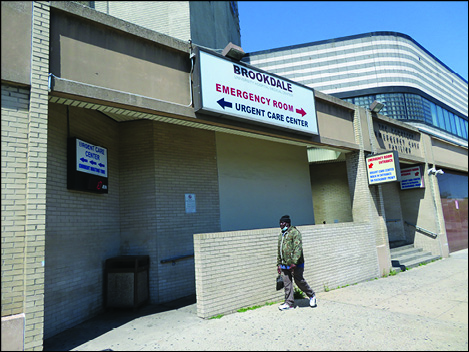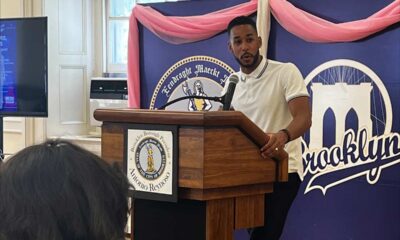Health & Wellness
Brownsville Faces Community Health Challenges Post-COVID

By Mary Alice Miller
Brownsville’s motto, “Never Run, Never Will,” speaks to the resilience of a neighborhood plagued with low rates of home ownership, wages, and job opportunities lower than the NYC average, and high rates of violence. Despite the odds, Brownsville’s strength is its people.
According to the NYC Dept. of Health, Brownsville has a high rate of health disparities compared to the rest of NYC. Health disparities are defined as diseases at greater levels among certain population groups than others.
Obesity, diabetes, hypertension, new HIV and hepatitis C diagnoses, binge drinking, psychiatric hospitalizations, infant mortality, and premature death present disproportionate health challenges to Brownsville.
NYS Dept of Health cancer incidence for Brownsville and Ocean Hill as of November 2021 was a rate of 495 per 100,000. Males had higher rates of cancer than females (595 and 439.2 per 100,000, respectively). Lung and colorectal cancers had the highest rate of invasive malignant tumors (49.9 and 37.1%, respectively).
A 2009 Brooklyn College/Teachers Preparatory School collaboration found several health disparities in Brownsville.
Air pollution causes many life-threatening diseases, such as asthma, lung cancer, and emphysema. Samples collected on the rooftop of Teachers Preparatory School found high rates of acid rain, which kills plants, animals, and fish. Acid rain is generally caused by sulfur dioxide emitted from large factories.
There is a relatively high level of carbon monoxide awareness and working CO monitors in homes, yet many people still use gas stoves to heat their apartments, despite the risk of CO-related death.
Brownsville does not have enough trees to counteract the impact of carbon dioxide emitted by cars. The lack of sufficient trees contributes to Brownsville having a high heat vulnerability index, which is associated with an increased risk of heat-related illness or death. Climate change causes hotter summers and longer heat waves, making heat related illnesses worse.
People-Focused Research: Health & Housing in Bedford-Stuyvesant, Brownsville, and East New York (a research initiative conducted in 2019) had 40 to 50 student researchers go out into the community to conduct one-on-one surveys. The study found that health and housing were ranked as the number one priority that community members believed would make the biggest difference in improving health and wellness.
In addition, the study found that indoor housing conditions can be a social determinant of health, promoting sickness instead of health. Poor housing conditions, including exposure to mold, lead-based paint, asbestos, and pests like mice and roaches, can lead to chronic health conditions and impact mental health and wellness.
According to the NYCDOHMH, at the beginning of the pandemic, more than half of patients tested positive for Covid-19 as of March 31, 2020, which is co-related to some of the highest cases and death rates. Brookdale Hospital was especially hard hit. Medical staff struggled to keep patients alive as their own lives were at risk. “Covid hit us hard,” said one doctor who spoke under condition of anonymity. “There were not enough stretchers. We had to administer breathing machines on the floor. We were on our knees treating patients.” Covid-19 took hundreds of residents from communities like Brownsville.
Brownsville is among NYC neighborhoods with high rates of food insecurity, defined as having a lack of consistent access to enough food for every person in the household. In addition, Brownsville is considered a food desert, a geographic area with poor access to affordable, healthy food options, including fresh fruits and vegetables. Brownsville has one supermarket to 15 bodegas which contribute to an over-saturation of unhealthy food choices. In Brownsville, food insecurity contributes to obesity(41%), diabetes(13%), hypertension (33%), and mental health issues such as anxiety and depression.
Brownsville has one of the highest rates of shootings and homicides in NYC. Due to initiatives from the City administration, the Brooklyn District Attorney’s office, and community-based organizations, the rate of gun violence has steadily decreased.
Brooklyn Borough President Antonio Reynoso announced Brooklyn’s Planning for Public Health initiative at his State of the Borough address. Reynoso’s plan will be rooted in public health outcomes. “Every resulting land use recommendation from the Borough President’s Office will be tied to improving public health and reducing health disparities across Brooklyn,” Reynoso said in an announcement of the plan.
In response to one-third of all NYC pregnancy-related deaths (predominately Black women) occurring in Brooklyn, Reynoso established a Maternal Health Taskforce. Reynoso launched several healthy baby programs.
photo/Mary Alice Miller
Challenges Post-COVID













